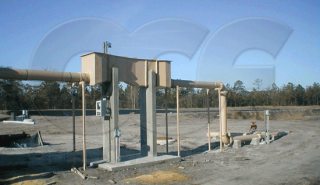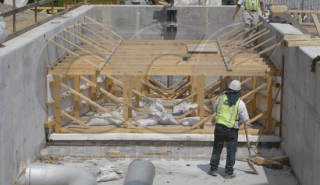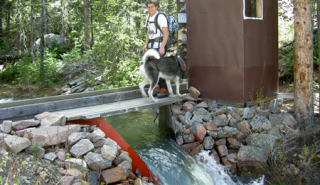It’s not uncommon in catchment, surface water, and watershed applications to only need to monitor a site for several seasons or years. Sometimes, in fact, there is a need to be able to dismantle the installation after the monitoring period has been completed. When this is the case, it often doesn’t make sense to permanently install a flume in a concrete channel.
What is needed, then, is a flume installation that is economical, easily fabricated in the filed, and able to be disassembled once the monitoring period is over.
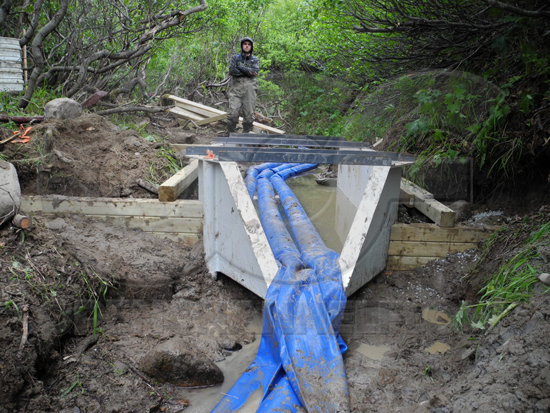
A common method of securing a flume in place is through the use of packed earth. The earth by itself isn’t able to withstand erosion by the inlet and discharge waters, so large dimensions lumber (think rail road ties or sleepers) are commonly used to armor the upstream / downstream banks. The top and end flange of the flume serve as convenient connection points (screwing or bolting) for the lumber.
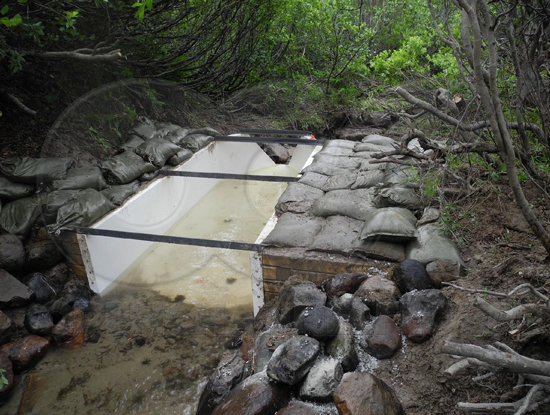
During installation, a waterproof membrane can be laid in the upstream channel and, running as a continuous piece, up behind the lumber wing walls at the entrance of the flume. The membrane can be secured to the downstream face of the topmost piece of lumber and weighted down in the upstream channel with rip rap or natural channel gravel and rocks. The goal is to minimize both flow bypass and the potential for upstream undermining of the flume.
Additionally, threaded rod or rebar can be run through the anchor clips on the outside of the flume and secured to earth anchors or embedded in precast concrete blocks to provide additional ballast down the sides of the flume.
Any excavated earth can then be packed on each side of the flume to bring the installation to grade. When backfilling around the flume, make sure to keep the dimensional stiffening angle at the top of the flume in place. For semi-permanent or temporary applications, it is generally advisable not to remove the angle.
Only in cast channels where there is no possibility of settlement or shifting should the angles be removed. On larger flumes it may be necessary to brace or crib the interior of the flume to help keep the flume in dimension.
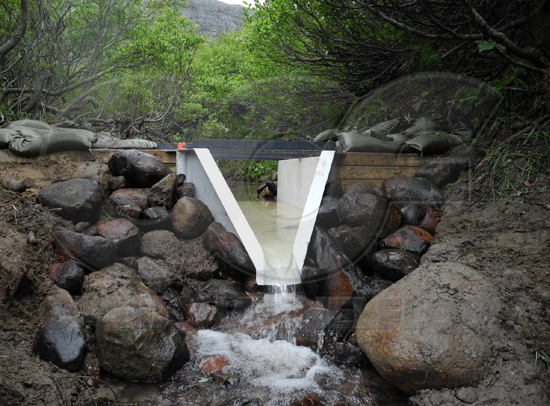
Once the backfill is near the top of the flume, a waterproof membrane is usually laid over the backfill to keep the fill area from eroding. The membrane is then usually held in place by several layers of sand bags.
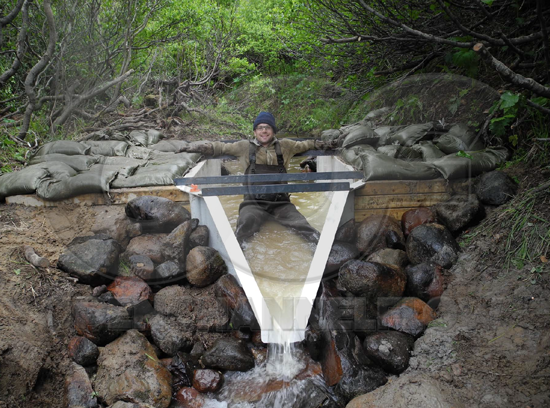
Downstream it is important to make sure that the channel floor and sidewalls are sufficiently armored so that scour does not occur. For smaller flows, waterproof membrane covered by natural gravel or rocks can be sufficient. For larger flow, a wide area of rip rap or natural rocks is commonly used.



